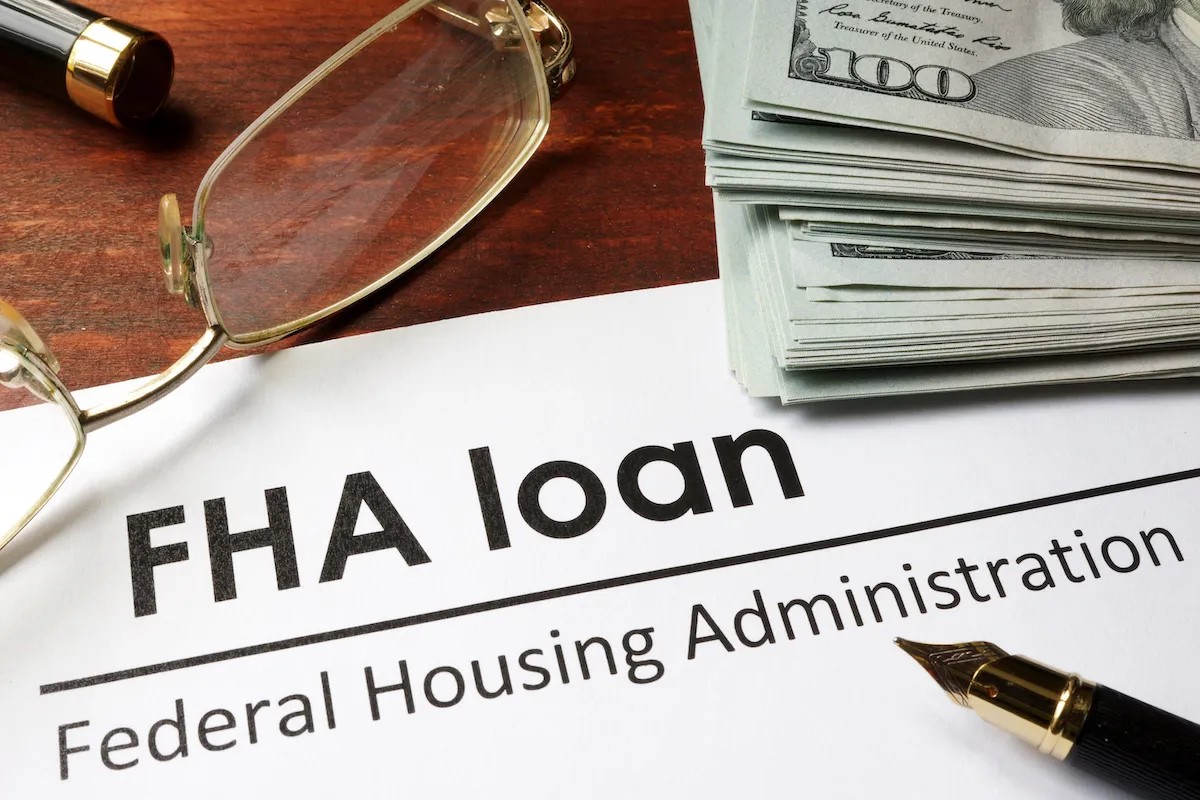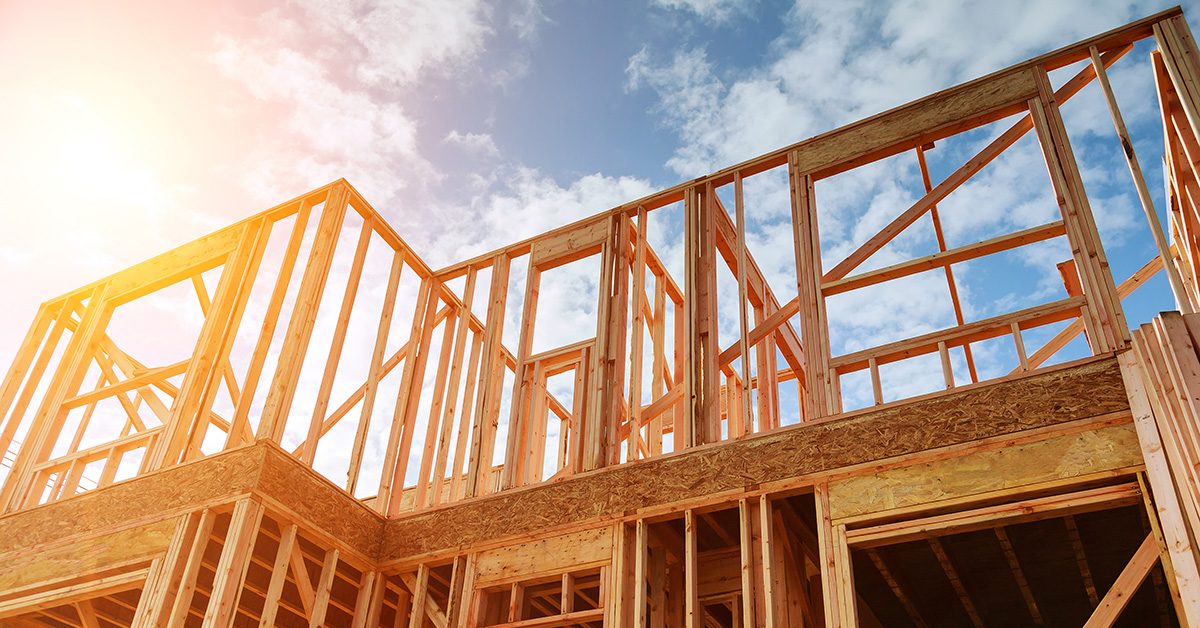Home>Home Maintenance>How To Get A Loan For Home Repairs


Home Maintenance
How To Get A Loan For Home Repairs
Modified: August 17, 2024
Looking for a loan to fund your home maintenance projects? Learn how to get a loan for home repairs and tackle those renovations with ease.
(Many of the links in this article redirect to a specific reviewed product. Your purchase of these products through affiliate links helps to generate commission for Storables.com, at no extra cost. Learn more)
Introduction
Welcome to the world of home maintenance! Owning a home can be a fulfilling experience, but it also comes with its fair share of responsibilities. One of the key aspects of maintaining a home is ensuring that it is in good condition and addressing any repairs or renovations that may be necessary.
Home repairs can range from minor fixes, such as a leaky faucet or a broken window, to major overhauls, like a roof replacement or a bathroom remodel. Regardless of the scale of the repair, one common challenge homeowners face is finding the funds to cover the expenses.
In this article, we will explore how to obtain a loan for home repairs, providing you with the information you need to make informed decisions and embark on your home maintenance journey with confidence.
Before diving into the loan process, it is essential to assess the need for home repairs. Conducting a thorough evaluation of your home’s condition will help you prioritize repairs and determine the extent of funding required.
Start by inspecting your property, both indoors and outdoors, and taking note of any areas that require attention. Have a checklist handy to ensure you cover all potential repairs, including plumbing issues, electrical malfunctions, structural concerns, and cosmetic improvements.
Once you have identified the repairs needed, you can move on to understanding the different loan options available. There are various financing options specifically designed to help homeowners cover the costs of home repairs.
Researching and comparing lenders is crucial to find the most suitable loan and interest rates for your needs. Take the time to explore different financial institutions, online lenders, and even government-backed loan programs, as they may offer specific benefits for home repairs.
Gathering the required documentation is the next step in the loan process. Lenders will typically request proof of income, credit history, and any relevant documentation related to the repairs being funded. It is important to be prepared and have these documents readily available to streamline the application process.
Applying for a home repair loan involves submitting an application to the chosen lender. The application will require personal information, loan details, and supporting documentation. Be sure to provide accurate information and answer all questions to the best of your knowledge.
After submitting your application, the lender will initiate the approval process and provide you with a timeline for their decision. It is essential to be patient during this stage, as it may take some time for lenders to review your application and make a decision.
If your loan application is approved, the lender will disburse the funds according to the agreed-upon terms. It is crucial to understand the repayment options offered and devise a budgeting plan to ensure timely loan repayment without straining your finances.
Lastly, borrowing responsibly for home repairs is essential to avoid falling into financial difficulties. Be mindful of your budget, only borrow what you can comfortably repay, and carefully consider the interest rates and fees associated with the loan options.
By following the steps outlined in this article, you can navigate the process of obtaining a loan for home repairs successfully. Remember, maintaining and enhancing your home is an investment in your comfort and well-being, and securing the necessary funds to address repairs is a crucial step in this process.
Now, let’s dive deeper into each step and explore the intricacies of obtaining a loan for home repairs.
Key Takeaways:
- Assess your home’s repair needs thoroughly to prioritize essential fixes. Research and compare different loan options to find the best terms and interest rates for your financial situation.
- Gather required documentation and apply for a home repair loan with patience. Understand the approval process and repayment options to manage your loan responsibly.
Read more: How To Get A Loan To Do Home Improvements?
Assessing the Need for Home Repairs
Before embarking on the journey of obtaining a loan for home repairs, it is crucial to assess the need for repairs in your property. Conducting a comprehensive evaluation will help you identify the areas that require attention and prioritize the repairs accordingly.
Start by inspecting your home both indoors and outdoors. Take note of any visible signs of wear and tear, damage, or issues that need immediate attention. This can include things like leaky faucets, cracked walls, malfunctioning electrical outlets, or a sagging roof. Additionally, pay attention to any safety hazards or structural concerns that may pose a risk to you and your family.
Create a checklist to ensure you cover all aspects of your home during the assessment process. This will help you stay organized and ensure that no repairs go unnoticed. Break down your checklist by room or area of the house, including kitchen, bathrooms, bedrooms, living spaces, and the exterior.
While conducting your assessment, consider both the functional and aesthetic aspects of your home. Some repairs may be necessary for safety or functionality reasons, while others may be more cosmetic in nature. Prioritize the repairs based on urgency and the impact they have on the overall condition and value of your property.
It is also important to think long-term during the assessment process. Consider any preventive measures or maintenance tasks that can help avoid future repairs. This can include things like sealing cracks, waterproofing, or updating outdated systems or appliances.
Consult with professionals if needed. In some cases, it may be beneficial to hire an expert to assess your home’s condition. This can be particularly helpful if you are unsure about certain areas or if you suspect hidden damage, such as plumbing or electrical issues. A professional inspection can provide you with a comprehensive report that outlines the repairs needed and their estimated costs.
Once you have completed your assessment, create a prioritized list of repairs based on urgency and budgetary constraints. This will help guide you in determining the amount of funding required for your home repairs and assist you in comparing loans and interest rates.
Remember, assessing the need for home repairs is the first crucial step in the loan process. By thoroughly evaluating your property, you will be equipped with the knowledge and understanding required to make informed decisions regarding your home repair loan.
Understanding Different Loan Options
When it comes to obtaining a loan for home repairs, there are several different options available to homeowners. Understanding these loan options will allow you to choose the one that best suits your needs and financial situation.
1. Personal Loans: Personal loans are a popular choice for financing home repairs. They are unsecured loans, meaning you don’t need to provide collateral. Personal loans typically have fixed interest rates and repayment terms, making it easier to budget for the loan. Keep in mind that the interest rates on personal loans can vary based on your credit score and financial history.
2. Home Equity Loans: If you have built up equity in your home, you may be eligible for a home equity loan. This type of loan allows you to borrow against the value of your property. Home equity loans often have lower interest rates compared to personal loans, and the interest may be tax-deductible. However, keep in mind that if you fail to repay the loan, you risk losing your home.
3. Home Equity Line of Credit (HELOC): A HELOC is similar to a home equity loan, but instead of receiving a lump-sum payment, you have access to a line of credit that you can draw from as needed. HELOCs typically have variable interest rates and a draw period, during which you can borrow funds, followed by a repayment period.
4. Government-backed Loans: The government offers various loan programs to assist homeowners with repairs and renovations. For example, the Federal Housing Administration (FHA) offers 203(k) loans specifically for home repairs and improvements. These loans can be used to purchase and rehabilitate properties, providing a single loan for both the purchase and renovation costs.
5. Home Improvement Loans: Many banks and financial institutions offer specific home improvement loans. These loans are designed to finance repairs or renovations and may have favorable interest rates and terms. Explore different lenders to find the best home improvement loan options available to you.
6. Credit Cards: While using a credit card for home repairs is an option, it is important to weigh the pros and cons carefully. Credit cards usually have higher interest rates compared to other loan options, so make sure you can comfortably handle the payments. Additionally, using credit cards for larger home repairs can quickly accumulate high amounts of debt if not managed properly.
When considering these loan options, it’s essential to evaluate your financial situation, creditworthiness, and the specific requirements of each loan. Compare interest rates, repayment terms, and any additional fees associated with the loans. Consider reaching out to multiple lenders to get quotes and find the best loan option that suits your needs.
By understanding the different loan options available, you can make a well-informed decision and secure the funding necessary to address your home repairs.
Researching and Comparing Lenders
Once you have determined the need for home repairs and familiarized yourself with different loan options, the next step is researching and comparing lenders. This crucial step will help you find a reputable lender offering favorable terms and conditions for your home repair loan.
Start by conducting online research to identify lenders that specialize in home repair loans or offer suitable loan products for your needs. Look for lenders with a solid reputation, positive customer reviews, and a history of providing excellent service in the home improvement loan industry.
Consider factors such as interest rates, loan terms, and repayment options. Look for lenders that offer competitive interest rates that align with your budget and repayment capabilities. Additionally, pay attention to any additional fees or charges associated with the loan, such as origination fees or prepayment penalties.
Check if the lender requires collateral for the loan, as this can impact your decision-making process. Some lenders may require a lien on your property or other assets as security for the loan, while others may offer unsecured loan options with no collateral required.
Take the time to read customer reviews and testimonials to get an idea of the lender’s customer service and overall experience. Look for lenders that have positive feedback regarding their responsiveness, transparency, and ability to guide borrowers through the loan process.
Consider reaching out to family, friends, or neighbors who have recently applied for a home repair loan. Ask them about their experiences and if they can recommend any lenders based on their personal interactions and satisfaction with the loan process.
Compile a list of potential lenders and compare them side by side. Evaluate the total cost of the loan, including interest charges and any fees, to get an accurate understanding of the financial commitment the loan entails. Ensure you take into account the loan term and any potential flexibility in repayment options.
Once you have narrowed down your list, take the time to contact each lender directly. This will allow you to ask any specific questions you may have and obtain personalized loan quotes based on your unique financial situation. Consider asking about prequalification or preapproval options to understand your eligibility for the loan.
Remember to be thorough in your research and take your time in making a decision. Rushing into a loan agreement without adequate research can lead to unfavorable terms or even falling victim to predatory lenders.
By diligently researching and comparing lenders, you can find a reputable financial institution that offers a loan program suited to your needs. A trusted lender will not only provide you with the necessary funding for your home repairs but also ensure a smooth loan process and excellent customer service.
Gathering Required Documentation
Once you have researched and selected a lender for your home repair loan, the next step is gathering the necessary documentation to support your loan application. Lenders require specific documentation to verify your identity, income, credit history, and the repairs being funded. Having these documents prepared in advance will streamline the application process and help ensure a smooth approval process.
Here are the commonly required documents when applying for a home repair loan:
1. Personal Identification: Provide proof of identification, such as a valid driver’s license, passport, or state-issued ID. This document will confirm your identity and validate your eligibility to apply for the loan.
2. Proof of Income: Lenders want to ensure that you have the financial means to repay the loan. Provide documentation such as pay stubs, W-2 forms, or financial statements that show your income sources, including employment, self-employment, or investments. If you are receiving any additional income, such as rental or alimony, include relevant documents as well.
3. Bank Statements: Submit your recent bank statements to demonstrate your financial stability and ability to manage loan repayments. Lenders often request bank statements for the past few months to evaluate your financial health and assess your monthly cash flow.
4. Credit History: Lenders will pull your credit report to assess your creditworthiness. Ensure that your credit history is accurate, and if there are any errors or discrepancies, take the necessary steps to resolve them. If you have a good credit score, include this in your application to strengthen your loan application.
5. Loan Purpose Documentation: Some lenders may require documentation related to the repairs being funded. This can include estimates from contractors or receipts for materials purchased. Providing detailed information about the repairs will help lenders understand the purpose of the loan and assess its validity.
6. Homeownership Documentation: If the repairs are for a property you own, you will likely need to provide documentation that proves your homeownership. This can include a copy of the deed, mortgage statement, or property tax documents.
Keep in mind that different lenders may request additional documentation depending on their specific requirements. It is essential to review the lender’s instructions and contact their customer support if you have any questions or need clarification on the required documents.
Organize your documents neatly and make copies of everything before submitting the application. This will ensure that you have a backup and can easily reference the documents later if needed.
Gathering the required documentation in advance will save you time and prevent any delays in the loan approval process. It demonstrates your preparedness and commitment to the application, increasing your chances of a successful loan outcome.
Consider applying for a home improvement loan through a bank or credit union. These loans are specifically designed to help homeowners finance repairs and renovations. Be sure to compare interest rates and terms from multiple lenders to find the best option for your needs.
Applying for a Home Repair Loan
After completing your research and gathering all the necessary documentation, it is time to apply for a home repair loan. The application process may vary slightly depending on the lender, but the following steps will give you a general idea of what to expect.
1. Review the Application: Start by thoroughly reviewing the loan application provided by the lender. Take the time to read through all the questions and requirements to ensure you understand what information is needed and how to provide it accurately.
2. Complete the Application: Fill out the loan application with accurate and complete information. Pay attention to details and double-check your entries for accuracy before submitting the application. Incomplete or incorrect information can lead to delays or even rejection of your loan.
3. Attach Required Documents: Assemble all the required documentation as outlined by the lender and attach them to your loan application. Ensure that you have made copies of all the documents for your records, as you may need them later in the process.
4. Submit the Application: Once you have completed the application and attached all the necessary documents, submit your application to the lender. Check if the lender offers online application options for a streamlined process, or if you need to submit physical copies of the application and documents.
5. Follow Up: After submitting your application, it is important to follow up with the lender. Confirm receipt of your application and ask about the expected timeline for review and approval. It is a good idea to keep track of important dates and make note of any reference or confirmation numbers provided by the lender.
6. Provide Additional Information: If the lender requests any additional information or documentation during the review process, promptly provide it to avoid any delays in the approval process. Stay in regular communication with the lender to address any questions or concerns promptly.
7. Be Patient: The loan approval process can take time, so it is important to be patient and avoid unnecessary stress. Be prepared for possible follow-up questions or requests from the lender, and respond promptly to keep the process moving forward.
8. Review the Loan Terms: Once your loan application is approved, carefully review the loan terms and conditions provided by the lender. Pay particular attention to the interest rate, repayment schedule, any associated fees, and any other relevant details. If you have any questions or concerns, clarify them with the lender before accepting the loan offer.
9. Sign and Accept the Loan Agreement: After reviewing and accepting the loan terms, sign the loan agreement as instructed by the lender. Make a note of any important deadlines or requirements specified in the agreement to ensure timely compliance.
Applying for a home repair loan can feel overwhelming, but by following these steps and staying organized throughout the process, you can navigate it smoothly and increase your chances of approval. Remember to always read and understand the terms and conditions of the loan before signing the agreement.
With your application submitted, it’s time to wait for the lender’s decision. Once approved, the loan funds will be disbursed, and you can move forward with your much-needed home repairs.
Approval Process and Timeline
After submitting your application for a home repair loan, the lender will initiate the approval process. This process involves reviewing your application, verifying the provided information, and assessing your eligibility for the loan. While the exact timeline can vary depending on the lender and individual circumstances, the following is a general overview of the approval process and timeline.
1. Initial Review: Upon receiving your application, the lender will conduct an initial review to ensure that all required documents and information are included. They will verify the accuracy of the information provided and check if any additional documentation is needed. This initial review typically takes a few days to a week.
2. Underwriting: Once the initial review is complete, the lender will proceed with underwriting, which involves a thorough evaluation of your financial situation, credit history, and the purpose of the loan. The underwriter will assess your ability to repay the loan based on your income, creditworthiness, and the estimated cost of repairs. This process can take anywhere from a week to several weeks depending on the complexity of the application and the lender’s workload.
3. Follow-up Questions or Requests: During the underwriting process, the lender may have follow-up questions or requests for additional information or clarification. It is important to respond promptly to these inquiries to avoid delays in the approval process. Be prepared to provide any requested documentation or address any concerns raised by the lender.
4. Credit Check and Verification: As part of the approval process, the lender will conduct a credit check to assess your creditworthiness and determine your interest rate. They may also verify your income and employment status by contacting your employer or requesting additional documentation, such as pay stubs or tax returns.
5. Loan Approval Decision: Once the underwriting process is complete and all necessary verifications have been made, the lender will make a loan approval decision. They will notify you of their decision, either by phone, email, or through official documentation. The approval timeline can range from a few days to a couple of weeks, depending on the lender’s internal processes and workload.
6. Loan Closing: If your loan application is approved, you will proceed to the loan closing phase. This involves reviewing and signing the loan agreement, understanding the terms and conditions, and finalizing the loan disbursement details. The loan closing process can typically be completed within a few days to a week.
It is important to note that the timeline for loan approval can vary based on various factors, including the complexity of the application, the lender’s internal processes, and any unforeseen circumstances. Some lenders may expedite the process for urgent repairs, while others may have longer processing times.
While waiting for the loan approval, it is essential to stay in regular communication with the lender, respond promptly to any inquiries, and provide any requested information or documentation promptly. This will help keep the approval process on track and minimize any potential delays.
By understanding the approval process and being patient throughout the timeline, you can navigate the loan application process with confidence and increase your chances of securing the funds necessary for your home repairs.
Loan Disbursement and Repayment Options
After your home repair loan is approved, you can expect the loan disbursement process to commence. Loan disbursement refers to the transfer of funds from the lender to your designated account, allowing you to access the funds for your home repairs. Alongside the disbursement, it is essential to understand the available repayment options to ensure timely and manageable loan repayment. Here’s what you need to know about loan disbursement and repayment:
Loan Disbursement:
1. Direct Deposit: The most common method of loan disbursement is through direct deposit. The lender will transfer the loan funds directly to the bank account you provided during the application process. This allows for quick and convenient access to the necessary funds for your home repairs.
2. Check: In some cases, the lender may issue a check for the loan amount. You can then deposit or cash the check as needed to cover the costs of your home repairs.
It is important to confirm with the lender how the loan funds will be disbursed and the expected timeline for the disbursement process. Ensure that you have provided accurate and up-to-date banking information to avoid any delays in receiving the funds.
Repayment Options:
1. Installment Payments: The most common repayment option for home repair loans is through fixed installment payments. This involves repaying the loan amount, along with interest, in equal monthly installments over a predetermined period of time. The loan agreement will outline the repayment schedule, including the number of payments and the amount due each month.
2. Automatic Payments: Many lenders offer the option to set up automatic payments, where the loan payments are automatically deducted from your bank account on a specified date each month. This helps ensure that your payments are made on time and eliminates the risk of late fees or missed payments.
3. Online or Mobile App Payments: Some lenders provide the convenience of making loan payments online or through a mobile app. You can log in to your account and make payments electronically, saving time and effort in manual payment processing.
4. Early Repayment: Check with your lender if there are any penalties or fees associated with early repayment. Some lenders allow borrowers to make extra payments or pay off the loan before the end of the loan term, helping save on interest charges. However, it is important to confirm the terms of early repayment to avoid any unexpected costs.
It is crucial to understand your repayment obligations and budget accordingly to ensure prompt and consistent loan repayment. Missing payments or making late payments can have negative consequences, such as damage to your credit score or incurring additional fees. Create a repayment plan and factor the loan payments into your monthly budget to ensure on-time payments.
If you encounter financial difficulties and are unable to make a loan payment, contact your lender immediately to discuss potential options. Some lenders may offer temporary forbearance or loan modification to help borrowers in challenging situations.
Understanding the loan disbursement process and exploring suitable repayment options will pave the way for successful management of your home repair loan. By staying organized and meeting your repayment obligations, you can address your home repairs and maintain financial stability.
Borrowing Responsibly for Home Repairs
While obtaining a loan for home repairs can provide the necessary funds to address critical maintenance issues, it is important to approach borrowing with responsibility and careful consideration. Here are some key factors to keep in mind when borrowing for home repairs:
1. Assess your budget: Before applying for a loan, evaluate your current financial situation and determine how much you can comfortably afford to borrow and repay. Consider your monthly income, expenses, and any other financial obligations you have. It is crucial to borrow an amount that aligns with your budget and ensures that you can meet your loan repayment obligations without causing financial strain.
2. Compare loan options: Research and compare the various loan options available to find the most suitable terms and interest rates. Look for lenders that offer competitive rates, flexible repayment options, and minimal fees. By understanding and comparing the loan terms, you can choose the option that best aligns with your financial goals and needs.
3. Understand the total cost: Be mindful of the total cost of borrowing, including interest charges and any associated fees. Calculate the total repayment amount over the loan term to ensure that it fits within your budget. Avoid focusing solely on the monthly payment amount and consider the overall financial impact of the loan on your long-term financial stability.
4. Consider alternative funding sources: Explore alternative funding options alongside traditional loans. For example, you may consider saving up for repairs, seeking low-interest or zero-interest financing options, or utilizing home equity if available. Carefully weigh the pros and cons of each option to determine what works best for your specific situation.
5. Beware of predatory lenders: Be cautious of lenders offering high-interest loans or loans with unfavorable terms, especially if you have a low credit score or limited financial resources. Research and choose reputable lenders with a track record of transparent practices and positive customer feedback. Avoid lenders that pressure you into borrowing more than you need or impose excessive fees and penalties.
6. Prioritize essential repairs: Focus on repairing essential aspects of your home that impact safety, structural integrity, or functionality. Prioritize repairs that have a direct impact on your quality of life and preserve or increase the value of your property. Postpone cosmetic or non-essential improvements that can be addressed in the future when your financial situation allows.
7. Create a repayment plan: Develop a repayment plan and budget that includes the loan payments. Ensure that these payments are accounted for in your monthly expenses and goals. By incorporating the loan repayment into your financial plan, you can avoid missed payments and the resulting negative consequences.
8. Communicate with your lender: If you encounter financial difficulties or anticipate challenges in making loan payments, reach out to your lender immediately. Some lenders offer options such as forbearance or loan modification to assist borrowers facing temporary hardships. It is better to address the issue proactively rather than default on your loan obligations.
Remember, borrowing responsibly for home repairs is about finding a balance between addressing necessary repairs and maintaining financial stability. By carefully considering your budget, comparing loan options, and being mindful of the total cost and repayment obligations, you can make informed decisions and ensure a positive borrowing experience.
Avoid taking on more debt than you can comfortably manage and stay diligent in repaying your loan on time. Responsible borrowing not only helps you address immediate home repair needs but also contributes to long-term financial well-being.
Conclusion
Securing a loan for home repairs can be a viable solution to address critical maintenance issues and improve the condition and value of your property. However, it is important to approach the borrowing process responsibly and make well-informed decisions that align with your financial situation and goals.
Start by thoroughly assessing the need for home repairs and prioritizing essential repairs that affect safety, functionality, and overall property value. Research and understand the different loan options available, comparing interest rates, repayment terms, and fees. Take the time to gather all the necessary documentation to support your loan application, ensuring a smooth and efficient process.
When applying for a home repair loan, be patient and maintain open communication with the lender. Understand the approval process and timeline, responding promptly to any requests for additional information or documentation. Once approved, carefully review the loan agreement, paying attention to the interest rate, repayment schedule, and any associated fees.
Loan disbursement will provide you with the necessary funds to begin your home repairs. Create a repayment plan that fits your budget, ensuring you can make timely loan payments without straining your finances. Explore repayment options such as installment payments, automatic payments, or online/mobile app payments to facilitate a smooth repayment process.
Throughout the borrowing journey, remember the importance of responsible borrowing. Assess your budget, compare loan options, and consider alternative funding sources if applicable. Be cautious of predatory lenders and prioritize essential repairs over cosmetic improvements.
In the event of financial difficulties, communicate with your lender promptly to discuss potential options and avoid negative consequences, such as missed payments or defaulting on the loan.
Securing a loan for home repairs is an investment in your home, enhancing its comfort, safety, and value. By borrowing responsibly and managing your loan effectively, you can achieve the necessary repairs while maintaining financial stability.
Remember, home maintenance is an ongoing process, and unforeseen repairs may arise in the future. By implementing proper budgeting practices and set aside savings for future repairs, you can be better prepared to handle any future home maintenance needs.
With the knowledge and insights gained from this article, you are now equipped to navigate the process of obtaining a loan for home repairs confidently. Make informed decisions, prioritize your repairs, and borrow responsibly to create a safe and comfortable home for yourself and your loved ones.
Frequently Asked Questions about How To Get A Loan For Home Repairs
Was this page helpful?
At Storables.com, we guarantee accurate and reliable information. Our content, validated by Expert Board Contributors, is crafted following stringent Editorial Policies. We're committed to providing you with well-researched, expert-backed insights for all your informational needs.














0 thoughts on “How To Get A Loan For Home Repairs”